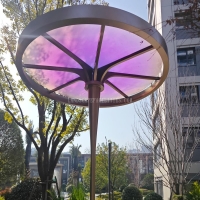Welcome to the website for landscape facilities products and knowledge.
How does the bin’s design accommodate waste disposal in areas with specific waste processing methods?
The design of waste bins plays a crucial role in accommodating diverse waste processing methods, ensuring efficiency and sustainability. In areas with specialized waste treatment systems, bins are tailored to meet specific requirements.
For instance, in recycling-focused regions, bins often feature multiple compartments to separate paper, plastic, and glass. This segregation streamlines the recycling process, reducing contamination and improving material recovery rates. Smart bins equipped with sensors are increasingly used in high-tech waste management systems, automatically sorting waste and optimizing collection routes.
In composting facilities, bins are designed with ventilation and moisture control to accelerate organic decomposition. Similarly, bins in hazardous waste areas are constructed from durable, leak-proof materials to prevent environmental contamination.
Urban settings often employ compacting bins to maximize capacity and minimize collection frequency, while rural areas may use larger, animal-resistant designs. The adaptability of bin design ensures seamless integration with local waste processing methods, promoting cleaner and more efficient waste management.
Ultimately, thoughtful bin design bridges the gap between waste generation and processing, aligning with environmental goals and operational needs.
Related search:

Recommendation
Metal frame with gradient color acrylic combined with high-end shading landscape facilities